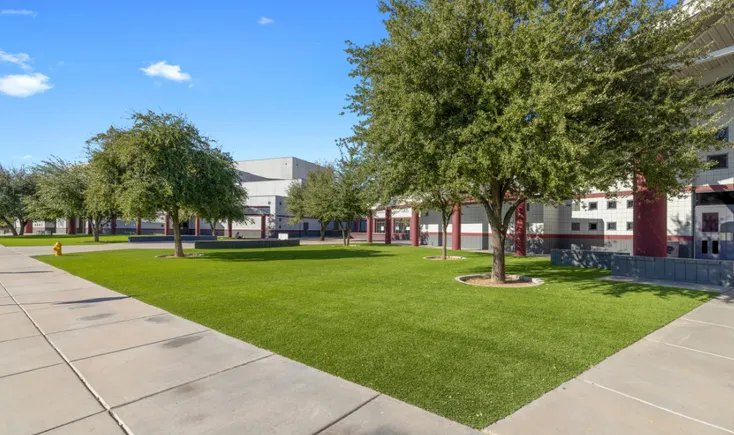Key points:
The U.K.’s Information Commissioner’s Office (ICO) recently warned of a surge in cyberattacks from “insider threats”–student hackers motivated by dares and challenges–leading to breaches across schools. While this trend is unfolding overseas, it underscores a risk that is just as real for the U.S. education sector. Every day, teachers and students here in the U.S. access enormous volumes of sensitive information, creating opportunities for both mistakes and deliberate misuse. These vulnerabilities are further amplified by resource constraints and the growing sophistication of cyberattacks.
When schools fall victim to a cyberattack, the disruption extends far beyond academics. Students may also lose access to meals, safe spaces, and support services that families depend on every day. Cyberattacks are no longer isolated IT problems–they are operational risks that threaten entire communities.
In today’s post-breach world, the challenge is not whether an attack will occur, but when. The risks are real. According to a recent study, desktops and laptops remain the most compromised devices (50 percent), with phishing and Remote Desktop Protocol (RDP) cited as top entry points for ransomware. Once inside, most attacks spread laterally across networks to infect other devices. In over half of these cases (52 percent), attackers exploited unpatched systems to move laterally and escalate system privileges.
That reality demands moving beyond traditional perimeter defenses to strategies that contain and minimize damage once a breach occurs. With the school year underway, districts must adopt strategies that proactively manage risk and minimize disruption. This starts with an “assume breach” mindset–accepting that prevention alone is not enough. From there, applying Zero Trust principles, clearly defining the ‘protect surface’ (i.e. identifying what needs protection), and reinforcing strong cyber hygiene become essential next steps. Together, these strategies create layered resilience, ensuring that even if attackers gain entry, their ability to move laterally and cause widespread harm is significantly reduced.
Assume breach: Shifting from prevention to resilience
Even in districts with limited staff and funding, schools can take important steps toward stronger security. The first step is adopting an assume breach mindset, which shifts the focus from preventing every attack to ensuring resilience when one occurs. This approach acknowledges that attackers may already have access to parts of the network and reframes the question from “How do we keep them out?” to “How do we contain them once they are in?” or “How do we minimize the damage once they are in?”
An assume breach mindset emphasizes strengthening internal defenses so that breaches don’t become cyber disasters. It prioritizes safeguarding sensitive data, detecting anomalies quickly, and enabling rapid responses that keep classrooms open even during an active incident.
Zero Trust and seatbelts: Both bracing for the worst
Zero Trust builds directly on the assume breach mindset with its guiding principle of “never trust, always verify.” Unlike traditional security models that rely on perimeter defenses, Zero Trust continuously verifies every user, device, and connection, whether internal or external.
Schools often function as open transit hubs, offering broad internet access to students and staff. In these environments, once malware finds its way in, it can spread quickly if unchecked. Perimeter-only defenses leave too many blind spots and do little to stop insider threats. Zero Trust closes those gaps by treating every request as potentially hostile and requiring ongoing verification at every step.
A fundamental truth of Zero Trust is that cyberattacks will happen. That means building controls that don’t just alert us but act–before and during a network intrusion. The critical step is containment: limiting damage the moment a breach is successful.
Assume breach accepts that a breach will happen, and Zero Trust ensures it doesn’t become a disaster that shuts down operations. Like seatbelts in a car–prevention matters. Strong brakes are essential, but seatbelts and airbags minimize the harm when prevention fails. Zero Trust works the same way, containing threats and limiting damage so that even if an attacker gets in, they can’t turn an incident into a full-scale disaster.
Zero Trust does not require an overnight overhaul. Schools can start by defining their protect surface – the vital data, systems, and operations that matter most. This typically includes Social Security numbers, financial data, and administrative services that keep classrooms functioning. By securing this protect surface first, districts reduce the complexity of Zero Trust implementation, allowing them to focus their limited resources on where they are needed most.
With this approach, Zero Trust policies can be layered gradually across systems, making adoption realistic for districts of any size. Instead of treating it as a massive, one-time overhaul, IT leaders can approach Zero Trust as an ongoing journey–a process of steadily improving security and resilience over time. By tightening access controls, verifying every connection, and isolating threats early, schools can contain incidents before they escalate, all without rebuilding their entire network in one sweep.
Cyber awareness starts in the classroom
Technology alone isn’t enough. Because some insider threats stem from student curiosity or misuse, cyber awareness must start in classrooms. Integrating security education into the learning environment ensures students and staff understand their role in protecting sensitive information. Training should cover phishing awareness, strong password practices, the use of multifactor authentication (MFA), and the importance of keeping systems patched.
Building cyber awareness does not require costly programs. Short, recurring training sessions for students and staff keep security top of mind and help build a culture of vigilance that reduces both accidental and intentional insider threats.
Breaches are inevitable, but disasters are optional
Breaches are inevitable. Disasters are not. The difference lies in preparation. For resource-strapped districts, stronger cybersecurity doesn’t require sweeping overhauls. It requires a shift in mindset:
- Assume breach
- Define the protect surface
- Implement Zero Trust in phases
- Instill cyber hygiene
When schools take this approach, cyberattacks become manageable incidents. Classrooms remain open, students continue learning, and communities continue receiving the vital support schools provide – even in the face of disruption. Like seatbelts in a car, these measures won’t prevent every crash – but they ensure schools can continue to function even when prevention fails.



